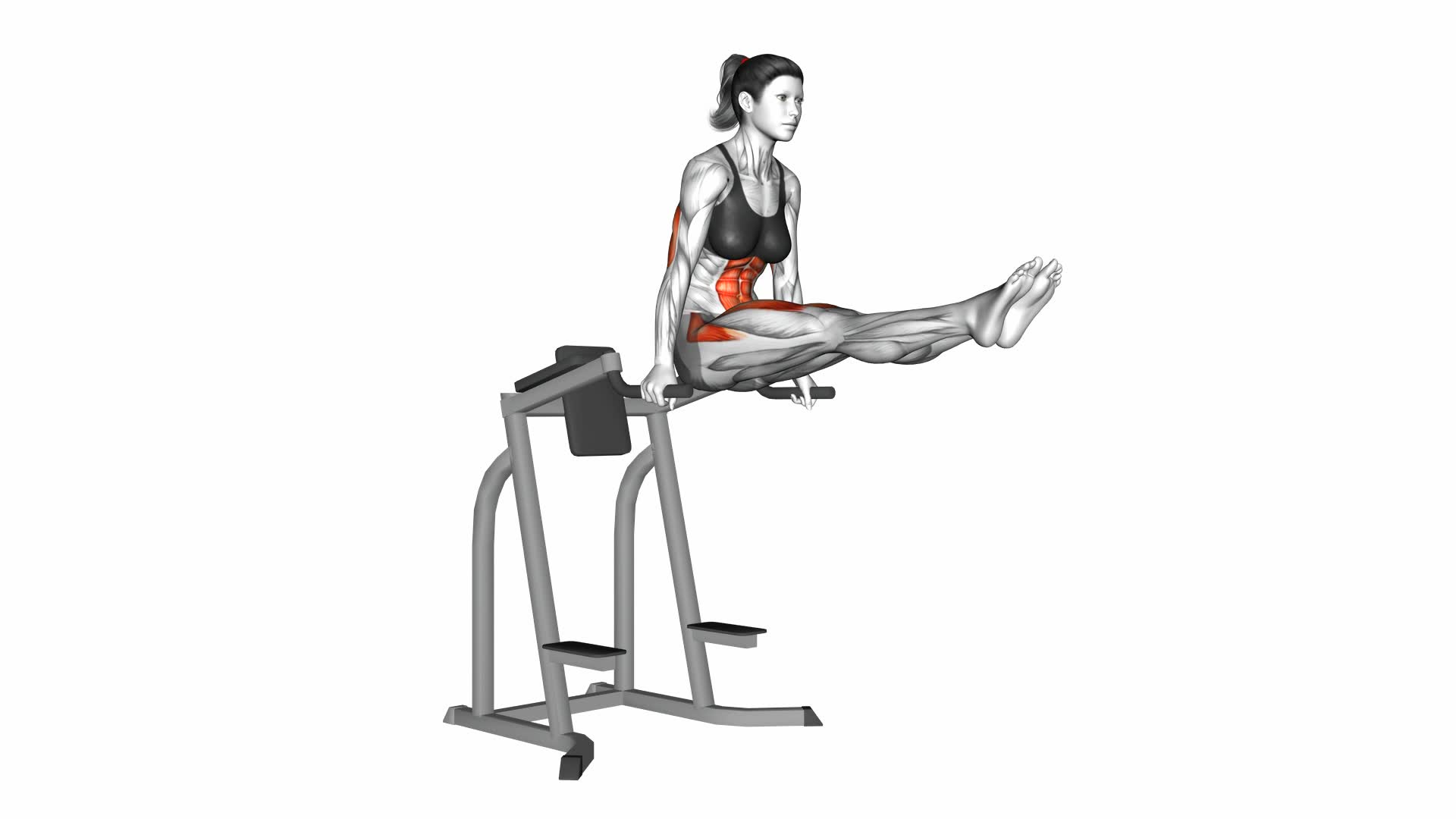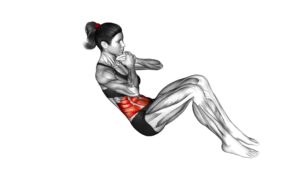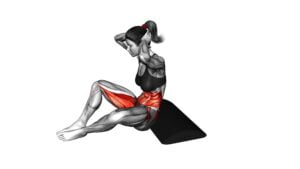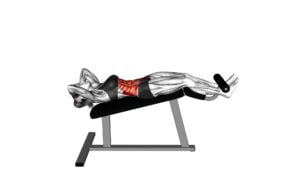L-sit – Video Exercise Guide & Tips

Are you looking to master the L-sit? Look no further! This video exercise guide and tips will help you perfect your form and technique.
Watch This Exercise Video
Learn about the benefits of the L-sit, variations and modifications, and common mistakes to avoid.
Plus, get expert advice on progressing and increasing difficulty.
With this comprehensive guide, you'll be on your way to achieving your L-sit goals in no time.
Let's get started!
Key Takeaways
- L-sit improves core strength and stability, targeting abs, lower back, and hip flexors.
- Proper form and technique include engaging core muscles, maintaining a straight back, and keeping legs extended and parallel to the ground.
- Core engagement is important for stability, support, and preventing injuries.
- Common mistakes to avoid include skipping progressions, not engaging core properly, rounding shoulders, and failing to keep legs straight and toes pointed.
Benefits of the L-sit
The L-sit offers numerous advantages for improving core strength and stability. By performing L-sit progressions, you can gradually build up your core muscles and increase your overall strength. This exercise targets the muscles in your abs, lower back, and hip flexors, helping to improve your posture and stability. The L-sit also engages your shoulder and chest muscles, enhancing upper body strength.
One benefit of the L-sit is that it can be modified to suit your fitness level. If you're just starting out, you can begin with bent knee L-sits or use parallettes for additional support. As you progress, you can work towards straightening your legs and eventually performing advanced L-sit variations, such as the V-sit or the straddle L-sit. These variations challenge your core muscles even further and provide a greater stimulus for strength development.
Proper form and technique are essential when performing the L-sit to maximize its benefits. It's important to maintain a straight back, engage your core muscles, and keep your legs extended and parallel to the ground. Practice proper breathing and focus on maintaining the position for a desired amount of time. By following these guidelines, you can ensure that you're getting the most out of your L-sit exercises and continue to progress in your core strength and stability.
Now, let's dive deeper into the proper form and technique for performing the L-sit.
Proper Form and Technique
To perform the L-sit with proper form and technique, it's crucial to engage your core throughout the exercise. This means actively contracting your abdominal muscles and maintaining a straight back.
Additionally, it's important to avoid common mistakes such as rounding your shoulders or letting your legs sag.
Core Engagement Importance
Engaging your core properly is crucial for maintaining proper form and technique while performing the L-sit. The importance of core strength can't be overstated when it comes to this exercise. When you engage your core, you activate the muscles in your abdomen, lower back, and pelvis, providing stability and support to your body. This allows you to maintain a straight spine and lift your legs off the ground, achieving the L-shape position.
Core exercises, such as planks and hollow holds, can help you develop the necessary strength and stability for the L-sit. By focusing on engaging your core throughout the exercise, you can maximize the benefits and avoid potential injuries.
Transitioning into the subsequent section, let's now discuss the common mistakes to avoid when performing the L-sit.
Common Mistakes to Avoid
Avoid these common mistakes to maintain proper form and technique while performing the L-sit.
One common mistake isn't following proper L sit progressions. It's important to start with easier versions of the exercise and gradually progress to more challenging variations. Skipping progressions can lead to poor form and increases the risk of injury.
Another common misconception isn't engaging the core muscles properly. The L-sit primarily targets the core, so it's crucial to engage the abdominal muscles, lower back, and hip flexors throughout the exercise. Failing to do so can result in a loss of stability and effectiveness.
Remember to keep your legs straight and toes pointed to maintain proper alignment.
Variations and Modifications
Now let's talk about some progression options for beginners and the benefits of modified variations when it comes to the L-sit exercise.
If you're just starting out, there are several ways to work your way up to performing the full L-sit, such as using support blocks or tucking your knees. These modifications allow you to build strength and improve your form gradually, reducing the risk of injury and ensuring proper muscle activation.
Additionally, modified variations can target specific muscle groups and increase the challenge level as you progress in your training.
Progression Options for Beginners
Start by incorporating easier variations and modifications into your L-sit training routine. Progression options for beginners include:
- Tuck L-sit: Begin by sitting on the floor with your knees bent and pulled towards your chest. Lift your feet off the ground and try to hold this position for a few seconds. As you get stronger, try straightening your legs gradually.
- L-sit on parallel bars: Use parallel bars or dip bars to support your body weight. Sit with your legs straight out in front of you and lift your body off the ground. Start with shorter holds and gradually increase the time.
- L-sit on a bench: Sit on the edge of a bench with your hands gripping the sides. Lift your body off the bench and extend your legs in front of you. Focus on keeping your body straight and engage your core.
By incorporating these modifications, you can gradually work your way up to the full L-sit position.
Now, let's explore the benefits of modified variations.
Benefits of Modified Variations
By incorporating these modifications, you can gradually increase the difficulty of your L-sit training and reap the benefits of modified variations.
Modified variations of the L-sit allow you to target different muscle groups and challenge your body in new ways. For example, you can try performing the L-sit with one leg extended while keeping the other leg tucked in. This variation increases the demand on your core muscles and helps improve balance and stability.
Another advanced progression is to perform the L-sit on parallel bars or rings, which requires even more strength and stability.
These modified variations not only make your L-sit training more challenging but also help you develop a stronger and more resilient body.
Common Mistakes to Avoid
What are some common mistakes you should avoid when performing the L-sit exercise? Proper technique is crucial to get the most out of this challenging exercise. Here are some common mistakes to avoid:
- Lack of core engagement: One of the biggest mistakes people make isn't properly engaging their core muscles during the L-sit. This exercise primarily targets the abs, so it's important to keep them tight and activated throughout the movement.
- Incorrect hand placement: Placing your hands too far forward or too far back can throw off your balance and make it harder to hold the L-sit. Make sure your hands are directly underneath your shoulders for optimal stability.
- Bending your knees: It's tempting to bend your knees to make the L-sit easier, but this takes away from the effectiveness of the exercise. Keep your legs straight and lifted off the ground to fully engage your core and build strength.
- Shoulder shrugging: Many people tend to shrug their shoulders up towards their ears during the L-sit, which can strain the neck and upper traps. Instead, actively depress your shoulders by pulling them down away from your ears.
Tips for Progressing and Increasing Difficulty
To increase the difficulty and progress in the L-sit exercise, focus on enhancing your core strength and stability. One of the progression options is to start with bent knees and gradually straighten them as you get stronger. This will increase the demand on your core muscles and make the exercise more challenging.
Another way to increase difficulty is to elevate your hands by placing them on blocks or parallettes. This will require more strength and flexibility in your shoulders and wrists. Additionally, you can try extending one leg at a time while keeping the other leg tucked in. This asymmetrical position will further challenge your core stability and increase the intensity of the exercise.
As you continue to improve, you can also experiment with advanced variations of the L-sit, such as the V-sit or the Straddle L-sit. These variations involve opening your legs wider or lifting them higher, respectively, which places even greater demands on your core muscles.
By incorporating these progression options and increasing the difficulty over time, you'll continually challenge your muscles and make progress in the L-sit exercise. This will help you build a stronger core and improve your overall stability.
Now, let's move on to the next section and discuss a sample L-sit workout routine.
Sample L-Sit Workout Routine
Start your L-sit workout routine by incorporating these exercises to improve your core strength and stability:
- L-sit progressions:
- Tuck L-sit: Sit on the floor with your legs bent and tucked close to your chest. Place your hands on the floor beside your hips and lift your body off the ground, keeping your legs tucked.
- One-leg L-sit: Sit on the floor with one leg extended straight out in front of you and the other leg bent and tucked. Place your hands on the floor beside your hips and lift your body off the ground, keeping your extended leg straight.
- L-sit exercises:
- L-sit hold: Sit on the floor with your legs extended in front of you. Place your hands on the floor beside your hips and lift your body off the ground, keeping your legs straight and parallel to the floor. Hold this position for as long as you can.
- L-sit dips: Sit on parallel bars with your legs extended in front of you. Place your hands on the bars beside your hips and lift your body off the ground, keeping your legs straight. Lower your body down by bending your arms and then push back up to the starting position.
Incorporating these L-sit progressions and exercises into your workout routine will help you build the necessary strength and stability to perform a full L-sit. Remember to start with the easier progressions and gradually work your way up as you become stronger.
Stay consistent and dedicated, and you'll see progress in no time.
Frequently Asked Questions
How Long Does It Take to Master the L-Sit Exercise?
To master the L-sit exercise, it takes time and practice. You need to focus on progressing gradually by increasing your strength and flexibility.
Start by working on the basic L-sit position, and gradually try to lift your legs higher and straighten them.
Common mistakes to avoid include not engaging your core muscles and not maintaining the correct body alignment.
With consistent effort and proper technique, you can improve your L-sit over time.
Can the L-Sit Exercise Help Improve Core Strength?
Incorporating the L-sit exercise into your workout routine can greatly improve your core strength. This exercise targets your abs, hip flexors, and lower back, helping to develop a strong and stable core.
To progress and modify the L-sit exercise for different fitness levels, you can start with bent knees and gradually work towards straightening your legs. This will challenge your core muscles even more.
Are There Any Specific Muscles Targeted by the L-Sit Exercise?
The L-sit exercise targets specific muscles in your body and offers numerous benefits.
By engaging your core muscles, including your abs and lower back, the L-sit helps to improve your core strength and stability.
Additionally, this exercise also targets your hip flexors, quadriceps, and triceps.
Incorporating the L-sit into your workout routine can lead to increased strength, improved balance, and enhanced overall athleticism.
Is It Necessary to Warm up Before Attempting the L-Sit Exercise?
Before attempting the L-sit exercise, it's important to warm up properly. Incorporating a warm-up routine has many benefits, such as increasing blood flow to your muscles and improving flexibility.
To warm up effectively, you can start with some light cardiovascular exercises like jogging or jumping jacks. Then, focus on dynamic stretches that target the muscles used in the L-sit, such as the core, shoulders, and hip flexors.
This will help prepare your body for the challenge ahead.
Can the L-Sit Exercise Be Done by Beginners or Is It Only Suitable for Advanced Athletes?
The L-sit exercise can be challenging for beginners, but it isn't exclusive to advanced athletes. With proper modifications and practice, anyone can work towards achieving this exercise.
It's important to focus on form and avoid common mistakes such as rounding your back or bending your knees. By gradually building strength and incorporating L-sit progressions, beginners can improve their core and upper body strength.
Conclusion
In conclusion, the L-sit is a challenging exercise that offers numerous benefits for core strength and stability.
By practicing proper form and technique, using variations and modifications, and avoiding common mistakes, you can progress and increase the difficulty of this exercise over time.
Incorporating the L-sit into your workout routine can help you achieve a stronger and more defined core.
Keep pushing yourself and enjoy the results of your hard work!

Author
Years ago, the spark of my life’s passion ignited in my mind the moment I stepped into the local gym for the first time. The inaugural bead of perspiration, the initial endeavor, the very first surge of endorphins, and a sense of pride that washed over me post-workout marked the beginning of my deep-seated interest in strength sports, fitness, and sports nutrition. This very curiosity blossomed rapidly into a profound fascination, propelling me to earn a Master’s degree in Physical Education from the Academy of Physical Education in Krakow, followed by a Sports Manager diploma from the Jagiellonian University. My journey of growth led me to gain more specialized qualifications, such as being a certified personal trainer with a focus on sports dietetics, a lifeguard, and an instructor for wellness and corrective gymnastics. Theoretical knowledge paired seamlessly with practical experience, reinforcing my belief that the transformation of individuals under my guidance was also a reflection of my personal growth. This belief holds true even today. Each day, I strive to push the boundaries and explore new realms. These realms gently elevate me to greater heights. The unique combination of passion for my field and the continuous quest for growth fuels my drive to break new ground.







